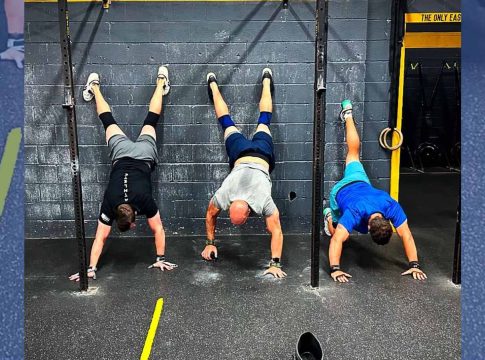Understanding Injury Rates in CrossFit: What You Need to Know
The world of fitness often wrestles with misconceptions, and CrossFit has found itself in the crosshairs of debate surrounding injury rates. With contrasting narratives swirling around, it is critical to dissect the facts from the fiction.
The Discussion on Injury Risks
A persistent question in the fitness community is whether CrossFit is truly dangerous. Recent insights share a more balanced narrative, shedding light on actual injury statistics. A noteworthy takeaway from the latest data released by CrossFit HQ is that the injury rate in CrossFit training generally aligns with other forms of exercise.
Key Injury Statistics
- Injury Rates: According to Dr. Amy West, a physician on the CrossFit Games medical team, the incidence of injuries in CrossFit ranges from 0.27 to 3.6 injuries per 1,000 hours of training. To put this into perspective, these numbers are lower than those typically associated with running, football, or soccer.
- Common Injuries: While injuries can occur, they frequently involve the spine, shoulders, knees, or wrists, often stemming from improper weightlifting techniques or excessive loads.
A Closer Look at Rhabdomyolysis
One topic often brought up in conjunction with CrossFit is rhabdomyolysis, or “rhabdo,” a serious condition involving muscle damage. Dr. West emphasizes that such cases are extremely rare within the CrossFit community and are typically linked to non-traditional workouts or circumstances.
Why Education Matters
Understanding the origins of data is invaluable. Dr. West encourages athletes and workout enthusiasts to educate themselves on fitness studies and be mindful of potential biases in reporting. If ever you encounter advisories against CrossFit, consider asking for alternative recommendations. A lack of informed guidance can indicate gaps in knowledge.
Boosting Resilience with CrossFit
What’s perhaps most compelling is how CrossFit training fosters a resilient body. Participants often find themselves not only more physically capable but better equipped for rehab and recovery after illnesses or injuries.
Potential Benefits of CrossFit
- Improved Metabolic Health: Engaging in CrossFit can catalyze enhanced metabolic efficiency and support overall well-being.
- Community Support: The environment fosters camaraderie and accountability, crucial for staying committed.
Navigating Caution in Fitness
While CrossFit has come under scrutiny, it is essential to practice it safely under knowledgeable coaching. With proper techniques and a supportive community, the potential risks decrease significantly.
Conclusion
The narrative around CrossFit as a uniquely risky endeavor doesn’t hold up to scrutiny. With data underscoring its effectiveness as a scalable and functional workout approach, CrossFit can serve as a powerful tool for health and injury prevention when done right.
Whether you’re a fitness novice or an experienced athlete, partnering with reputable coaches and staying informed will help you make the most of your CrossFit journey. Remember, staying fit is about resilience, understanding, and continuous learning. Let’s embrace the journey to better health together!

Covers wellness, nutrition, mental health, and daily life tips.
Bio: Talia brings a background in health journalism and holistic living to help readers live better, one tip at a time.

